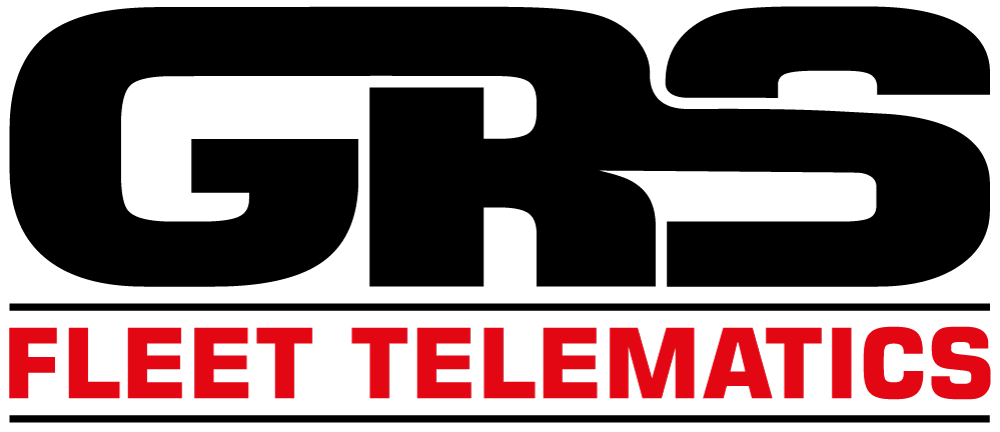How to Reduce Fleet Fuel Costs: A Step-by-Step Guide
Learn effective strategies to cut fleet fuel costs by up to 15% through telematics, driver training, and smart route planning.

Fuel makes up around 60% of total fleet operating costs, and prices are higher than ever. But with the right strategies, you can save 10–15% on fuel expenses. Here's how:
- Use telematics systems: For just £7.99 per vehicle per month, track fuel usage, driver behaviour, and route efficiency. This can cut fuel consumption by 10% and reduce accident-related costs by 21%.
- Train drivers: Focus on smoother acceleration, reducing idling, and maintaining consistent speeds. This can improve fuel efficiency by up to 20%.
- Plan better routes: Smart route planning can save up to 9% on fuel, avoiding traffic and unnecessary mileage.
- Prevent fuel theft and waste: Use fuel management tools to monitor tank levels, detect irregularities, and secure your resources.
- Analyse data: Regularly review fuel reports to identify inefficiencies and track improvements.
Fuel Consumption Optimization Guide for Fleet Managers
Step 1: Track Fuel Usage
Keeping an eye on fuel consumption is essential, as it makes up around 60% of total fleet operating costs. Modern telematics systems can provide detailed insights to help cut waste and manage usage effectively.
Set Up Telematics Tracking
Install telematics for £7.99 per vehicle per month to monitor:
- Vehicle location and route compliance
- Fuel usage patterns
- Idling time (which can waste up to 2.27 litres per hour)
- Driver habits like rapid acceleration, hard braking, and speeding (which can lower fuel efficiency by up to 30% on motorways)
Pair these insights with fuel management tools to tighten control over expenses.
Install Fuel Management Tools
Once key metrics are tracked, use fuel management systems to take control. These tools can:
- Automatically track fuel usage
- Provide real-time updates on fuel levels
- Integrate with fuel cards for easier expense tracking
- Generate detailed consumption reports
"Fuel management and monitoring are essential tools for saving your fleet money." - Fueltek
In-cab alerts can also notify drivers when they're idling too long or driving inefficiently. This immediate feedback encourages better habits over time.
Choose Fuel Buying Methods
How you buy fuel can significantly affect costs. Consider these approaches:
| Buying Method | Benefits | Best For |
|---|---|---|
| Contract Purchasing | Fixed prices, predictable costs, volume discounts | Large fleets with steady usage |
| Spot Purchasing | Market rate flexibility, no long-term commitment | Smaller fleets or irregular usage |
| On-site Storage | Bulk savings, no need to find stations, full usage control | Fleets with centralised operations |
Use telematics data and scorecards to guide smarter fuel purchasing decisions and maximise savings.
Step 2: Improve Driver Performance
Aggressive driving can significantly impact fuel efficiency, reducing it by up to 30% on motorways and 40% in stop-start traffic.
Track Driving Patterns
Telematics systems can monitor driving behaviours that waste fuel:
| Behaviour | Impact on Fuel Usage | Solution |
|---|---|---|
| Harsh Acceleration | Up to 40% higher fuel use in stop-start traffic | Real-time alerts and coaching |
| Excessive Speeding | Up to 30% more fuel consumed on motorways | Speed limiters and monitoring |
| Sharp Cornering | Leads to extra fuel use and vehicle wear | Driver performance tracking |
| Unnecessary Idling | Wastes avoidable amounts of fuel | Automatic idle notifications |
In-cab alerts provide real-time feedback, helping drivers correct inefficient habits on the spot. These insights can then be used to design tailored training programmes to further improve driving efficiency.
Train Drivers in Fuel Saving
Combining telematics with driver training can cut fuel consumption by up to 20%. Training should focus on these key areas:
- Smooth acceleration: Apply steady pressure to the accelerator.
- Anticipatory driving: Plan ahead to reduce unnecessary braking.
- Consistent speeds: Stay within fuel-efficient speed ranges.
- Engine management: Use appropriate gears and control engine revs.
"It's a human being that's advising you rather than beeps and lights. It doesn't necessarily have to be backed up by driver training because it is driver training." - Mark Roberts, managing director, Lightfoot
Reward Efficient Drivers
Creating incentive programmes based on telematics data can motivate drivers to adopt fuel-efficient habits. Fleet managers can use driver scorecards to track:
- Fuel usage
- Reduction in idle time
- Smooth driving behaviours
- Speed limit compliance
- Adherence to planned routes
"Our drivers have responded really well to it and we're seeing improvements across the board. Our maintenance costs have reduced, along with our fuel bills, and we may be able to negotiate lower insurance premiums because Lightfoot encourages safer driving." - Rhys Davies, HSS logistics project manager
Telematics-based monitoring, combined with focused training, typically leads to fuel savings of 10–15%. Offering monthly rewards, such as cash bonuses or other incentives, can further encourage drivers to maintain efficient driving practices.
Step 3: Plan Better Routes
Smart route planning can significantly cut fleet fuel costs. Telematics systems, for example, can reduce fuel consumption by up to 9%.
Map Efficient Routes
Telematics systems rely on algorithms to find the most fuel-efficient routes. They consider key factors like traffic and road types:
| Factor | Impact on Efficiency | Solution |
|---|---|---|
| Traffic Patterns | Stop-and-go driving can increase fuel use by 40% | Use real-time traffic data to avoid delays |
| Road Types | Motorways and urban roads affect fuel usage differently | Choose routes based on current conditions |
With real-time data, managers can reroute vehicles around congestion, cutting idle time and wasted fuel. Once efficient routes are identified, review how vehicles are deployed to maximise savings.
Check Vehicle Usage
Reducing mileage by 10% on a fleet averaging 12,000 miles per year can save around £150 in fuel per vehicle.
Key areas to focus on include:
- Vehicle distribution: Ensure fleet resources are evenly allocated across service areas.
- Route redundancy: Eliminate overlapping journeys to save time and fuel.
- Traffic timing: Schedule trips during less busy periods to avoid delays.
- Load matching: Use appropriately sized vehicles for each job to improve efficiency.
"Getting drivers from A to B faster and more efficiently means less time spent driving and idling and saves on fuel fleetwide." – MiX by Powerfleet
Switch to Low-Fuel Vehicles
Combining route planning with fuel-efficient vehicles can amplify savings. Consider hybrid, electric, or newer Euro 6 diesel models for better fuel economy.
Routine maintenance also plays a role. For example, properly inflated tyres can prevent up to 3.3% in fuel efficiency losses. Telematics dashboards provide real-time updates, helping managers decide when to replace or upgrade vehicles.
Step 4: Stop Fuel Loss
Fuel theft and waste can have a big impact on fleet expenses. Keeping a close eye on fuel use and implementing security measures can help protect your fuel resources.
Monitor Fuel Levels
Modern telematics systems make it easier to track fuel use and spot issues like theft or waste. Tools like real-time tank sensors can flag sudden drops in fuel levels, while purchase integration matches fuel card transactions with vehicle locations. Additionally, consumption analytics can compare miles driven to fuel used, helping to identify inefficiencies.
These systems can highlight suspicious activity, such as:
- Sudden drops in fuel levels while the vehicle is stationary
- Purchases made outside approved routes
- Mismatches between mileage and fuel consumption
"In an industry where operational efficiency is the key, and fuel accounts for close to 30% of total expenses, fuel theft / fraudulent fuel purchases can be like a stab in the back." – fleetroot.com
When irregularities are spotted, take immediate action to strengthen your defences and prevent further losses.
Add Security Features
Securing your fleet's fuel requires a mix of physical and digital measures.
For physical protection, consider:
- Installing sensors inside fuel tanks
- Replacing standard fuel caps with sensor-equipped versions
- Using fuel floats that connect to GPS tracking systems
Digital tools can also play a crucial role, including:
- Setting up geo-fencing alerts for unauthorised movement
- Activating real-time notifications for unusual fuel level changes
- Keeping an eye on vehicle usage outside of standard operating hours
Step 5: Use Data to Cut Costs
Telematics systems provide detailed data that can help identify inefficiencies and track progress over time.
Create Fuel Reports
Monitor key metrics that affect fuel usage, such as:
- Fuel consumption per vehicle and driver
- Idling patterns
- Aggressive driving behaviours
- Route efficiency
- Maintenance adherence
- Miles per gallon (MPG)
Regularly reviewing these metrics can reveal patterns contributing to higher fuel costs. For instance, if one vehicle consistently has lower MPG compared to others in your fleet, it might need servicing.
"Telematics solutions are crucial for organisations seeking to curb fuel costs and enhance overall fleet management. By providing real-time data on vehicle performance and driver behaviour, this technology not only ensures smoother operations but also aids in strategic decision-making aimed at maximising fuel efficiency." - MiX by Powerfleet
Use this information to make ongoing adjustments, improving both driver habits and vehicle performance.
Set Up Performance Tracking
Performance tracking ensures accountability and encourages continuous improvement.
Driver Performance Metrics
- Aggressive driving can lower fuel efficiency by up to 40% in stop-and-go traffic.
- Monitor rapid acceleration, hard braking, and speeding.
- Track idling time, which can waste up to 2.27 litres of fuel per hour.
Vehicle Efficiency Indicators
- Tyre pressure: A 1 psi drop can reduce fuel efficiency by 0.2%.
- Engine performance trends.
- Adherence to maintenance schedules.
To make the most of this data, follow these steps:
-
Create Driver Scorecards
Measure individual performance, including fuel usage, idling percentages, and eco-driving compliance, to provide actionable feedback. -
Set Achievable Targets
Use past data to set realistic goals for reducing idle time, improving MPG, and minimising aggressive driving incidents. -
Implement Regular Reviews
Conduct monthly reviews to analyse trends, highlight best practices, address weak areas, and recognise top performers.
With fuel making up about 60% of total fleet operating costs, using data to optimise consumption can lead to noticeable savings. In fact, targeted monitoring and improvement efforts can achieve average fuel savings of 10%.
Conclusion
Developing a well-thought-out telematics plan can help lower fuel expenses significantly. Research indicates that fleets utilising telematics have cut fuel consumption by 10% and reduced accident-related costs by 21%.
Carlsberg's earlier success with eco-driving techniques highlights how these methods can lead to noticeable savings in both fuel and costs. With fuel representing a large portion of operating costs, even minor adjustments can lead to meaningful financial benefits. For example, cutting mileage by 10% for a vehicle covering 12,000 business miles annually could save approximately £150 in fuel expenses.
Each step in this guide plays a role in creating a comprehensive fuel-saving approach. Together, they offer an effective way to reduce fleet fuel costs:
- Setting up effective fuel tracking systems
- Training and monitoring drivers to improve habits
- Using telematics data to streamline routes
- Preventing fuel theft and unnecessary waste
- Leveraging data analytics for ongoing improvements
Telematics, priced as low as £7.99 per vehicle per month, paired with focused driver training, provides measurable savings. By adopting these strategies, fleet managers can cut fuel costs while boosting overall efficiency.
